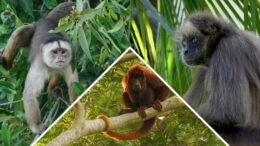Imagine a vast agricultural field, endless rows of soy or corn running for acres in every direction. Now imagine that this field grows where a mighty forest once stood. The forest, long since chopped down by human hands and machines, now exists in just a handful of pockets, a few spots here and there where the original trees — and their inhabitants — still live.
It shouldn’t be a hard image to visualize. We’ve all seen it: the lonely patches of forest, grassland or other natural systems squeezed between farmland, buildings or highways.
These pockets of undeveloped land may be small, but for many wild plants or animals, they’re all that remains. Those often-endangered species depend on fragmented habitats for their continued survival.
But although the sites serve as vital refuges for wildlife, fragmented habitat comes with a cost — sometimes many costs — and species carry those burdens unevenly.
To understand how habitat fragmentation affects wildlife, I often think of a study I first covered in 2016 about three monkey species — the white-fronted capuchin (Cebus albifrons), the Venezuelan red howler (Alouatta seniculus), and the critically endangered brown spider monkey (Ateles hybridus). All three live in Colombia’s Magdalena Valley, where they’ve been forced to adapt to life in and around massive cattle ranches.
During the study researchers visited 10 forest fragments that had become isolated from each other by the cattle pastures, the San Juan River and natural savanna. They studied each area for signs of the three monkeys and the health of the forest itself.
In the process they developed three case studies about the ways species adapt — or fail to adapt — to habitat fragmentation. They also provided insight into how other animals might fare in similar situations.
Case 1: The White-Fronted Capuchin
Capuchins, gorgeous, cream-colored monkeys who weigh about 7 pounds, seemed to fare best. The researchers found about 130 groups of them living in all but the smallest forest fragment. A highly adaptable species, capuchins are omnivores — eating everything from fruits to small mammals — and forage both in trees and on the ground. They’re also capable of traveling great distances.
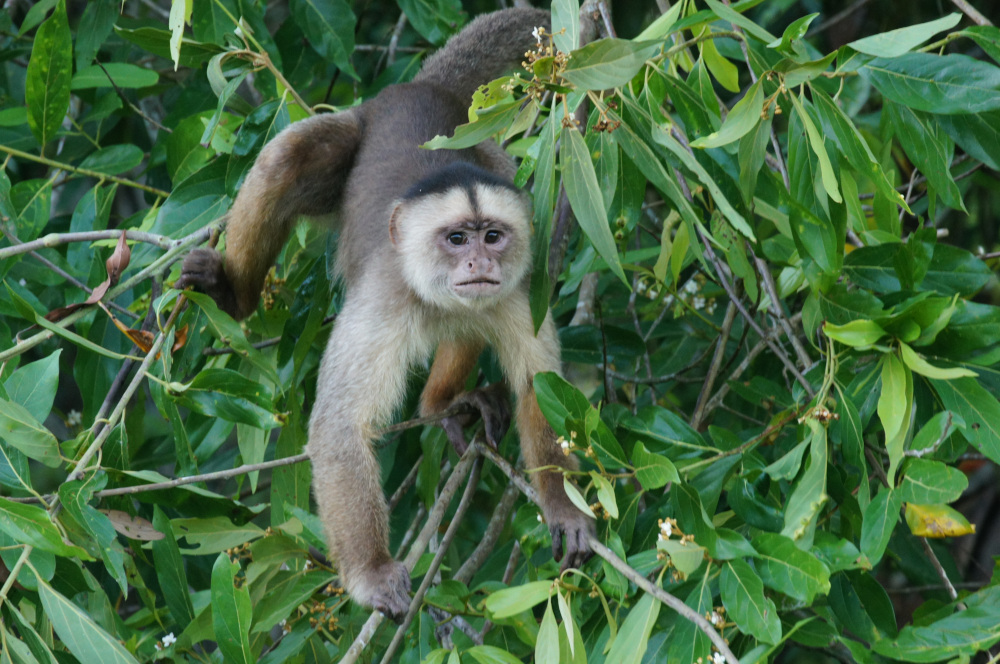
Those traits add up: The researchers concluded that the species is “not strongly affected by anthropogenic disturbance.” They even observed groups of capuchins traveling from one forest fragment to another, a sign that they’ve adapted to short bursts of time in the human-dominated parts of the landscape.
Capuchins have one other key advantage. They only breed every other year, and they mature slowly, but this appears to give them time to develop “individual learning and [the] ability to adjust to environmental variation,” according to the study.
Case 2: The Venezuelan Red Howler
Howler monkeys (who, despite the nation in their name, live in at least five countries) also did well, although not quite as well as capuchins. Researchers documented 87 groups of these primates. Again, they appeared in all but the smallest of the 10 forest fragments, but they displayed a tendency to stick close to the bigger trees at each site.
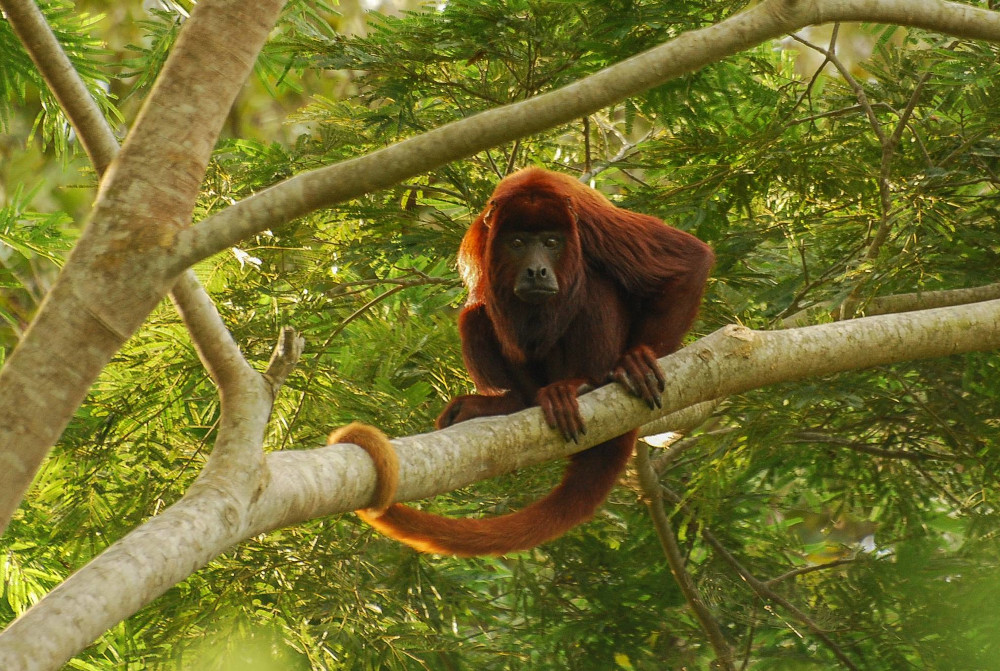
Those big trees provide most of what the animals need. As the researchers note, arboreal howlers are extremely slow-moving primates who are very careful about the way they exert their energy. That’s the point of their famous howl, which can be heard for miles: It warns off other howler groups and prevents fighting over food resources.
As for that food, they’re primarily leaf-eaters — the big trees provide a steady supply of food without the need to keep moving around during the day — although howlers can adapt to different food sources. But they didn’t venture out into the fields, as they aren’t adapted to life on the ground. In time this will limit each group’s success.
Case 3: The Brown Spider Monkey
Critically endangered spider monkeys fared worst. The researchers only made 33 observations for this species, all in the “best” five forest fragments, with high-quality canopy density that supported the highly arboreal primates.
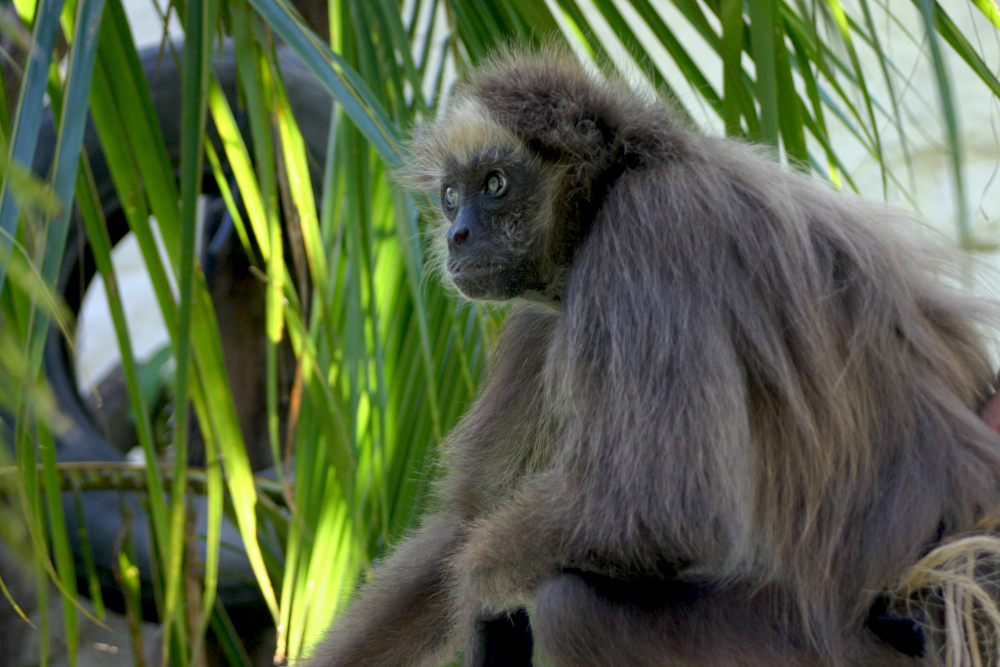
These spider monkeys, a large-bodied species reaching up to 20 pounds, only eat ripe fruits, which they prefer to forage high in the tree canopy. This means their diet is extremely limited, as are the types of habitats they can inhabit.
Interestingly, spider monkeys appear to be very social, but groups in the study actively dispersed from each other to avoid individual competition for food. Which is a good thing, because there wasn’t a lot of it.
What Can We Learn From This?
Based on these observations, researchers concluded that forest fragment quality may be more important for some species than the size of the fragment or how isolated it is from other forests.
Size did matter, though. The smallest fragment, which was only 0.7 hectares (1.7 acres), had no monkeys of any species. That suggests that there must be a threshold beneath which a forest fragment becomes inhospitable to primates.
Although the capuchins appear to have adapted about as well as they could, the researchers did note that the forest fragmentation in the Magdalena Valley took place recently, so long-term negative effects may still be waiting in the wings.
Meanwhile, the study offered important clues to protecting critically endangered brown spider monkeys, previously considered one of the world’s most endangered primates (they only fell off that list in recent years because other species were doing so much worse). They remain threatened by habitat destruction, hunting, and the illegal pet trade. As the 2014 “Primates in Peril” report pointed out, the species at the time was restricted to less than 18% of its historic habitat in Colombia, and less than 1% percent of that habitat was protected. This study provided conservationists with some strategies to pick which of those remaining habitats (the biggest ones with the biggest trees) needed to be protected.
Tiny Habitats, Bigger Lessons
We can also learn a lot about other species — and our broader conservation priorities — from these three monkey species.
Many other species face similar threats from habitat fragmentation. As the natural world gets squeezed into smaller and smaller refugia (last-chance habitat fragments), we’ll need to pay attention to what species and habitats remain and plan for their long-term survival.
That’s because small groups can disappear in the blink of an eye. The arrival of a disease, predator, natural disaster or other threat can wipe out an isolated species population or an entire habitat fragment. Constant monitoring will help conservationists adapt and respond to these threats before they become crises.
Most species will need some sort of connectivity between habitat fragments, allowing them to move as food supplies (and the seasons) shift. They’ll also need to find other populations of their kind, to prevent the inbreeding common in isolated groups. Many conservationists devote their careers to figuring out issues related to migration and connectivity.
Speaking of migration, understanding a fragment’s role on the greater landscape remains an essential piece of the puzzle. Think of birds, for example. As they migrate, they need places to land, feed and rest on every leg of their journey. That means preserving multiple habitats, even if they’re all fragments, across the landscape.
Specialist species will need the most help. Like the spider monkey, if a species relies on a specific food or a particular quality of tree, those needs will require conservation prioritization. If a species is a generalist, able to adapt to its circumstances — think about the racoons or deer in your suburban neighborhood, or the capuchin in this study — it may need less help. Although even then, preserving green space remains important.
Fragments also risk further degradation because they butt up against fences, roads or other forms of human development, which allow noise, pollution, introduced species, human hunters, dogs and cats, and a variety of other threats to make their way inside (a process of further degradation known as the edge effect). Any of these threats can chip away at a habitat’s unique qualities until it becomes uninhabitable. To preserve the most important fragments, we may need to establish buffer zones — think of them as the DMZ between nature and humanity — or find other ways to mitigate ongoing risks.
And of course, some species will never do well in fragments — for instance, wide-ranging creatures like grizzly bears, mountain lions and wolverines, who each require large territories without competition from others of their kind. We need to preserve large swathes of land and water for species like this to survive.
This may sound insurmountable in an ever-expanding human world, but there’s one more important lesson to consider: Fragmentation doesn’t have to be forever.
That’s why whenever I think about habitat fragmentation, I also think of the conservation group Saving Nature, which buys up farmland and other degraded lands, replants them, and recreates habitats and migration corridors. One of their most notable successes has been in Colombia (the nation where the study of the three monkeys took place), where they’ve secured nearly 4,500 acres toward a goal of creating a vital forest corridor.
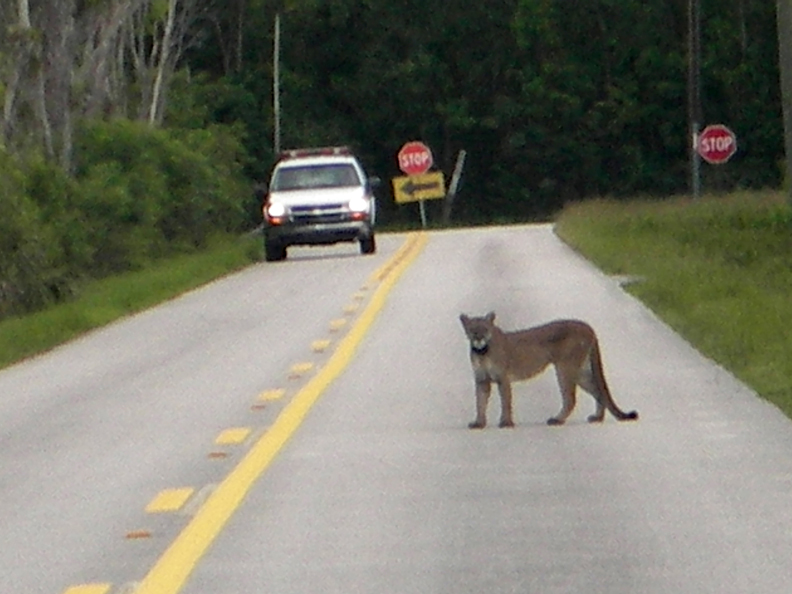
Closer to home, I also look to the example of the Florida Wildlife Corridor, which since 2021 has promoted the conservation of more than 170,000 acres to help enable species such as the Florida panther to flow freely through the Sunshine State. This work, according to a new report, also protects people by reducing the threat of wildfires and increasing Florida’s climate resilience.
Then there’s the Yellowstone to Yukon Conservation Initiative, which aims to connect and preserve more than half a million square miles across western North America. They’ve already made great progress and, in the process, helped a wide range of species.
Dozens if not hundreds of other connectivity projects, both large and small, are taking place right now around the world — such as the world’s largest wildlife bridge, due to open near Los Angeles in 2026. And everywhere you look, you’ll find people working to remove dams or fences, or to make green spaces — parks, refuges, rivers or their own backyards — more hospitable to local and migrating wildlife, and to connect the green dots of fragmented habitats whenever they can.
We’re repairing the damage, one acre at a time, while we also fight a war against further attrition. We can’t do it fast enough, and many species and habitats don’t have much time to wait. But for rare plants and animals, every inch counts.
![]()
Get more from The Revelator. Subscribe to our newsletter.
Previously in The Revelator:
Why Climate Grief Is an Essential for Climate Action

